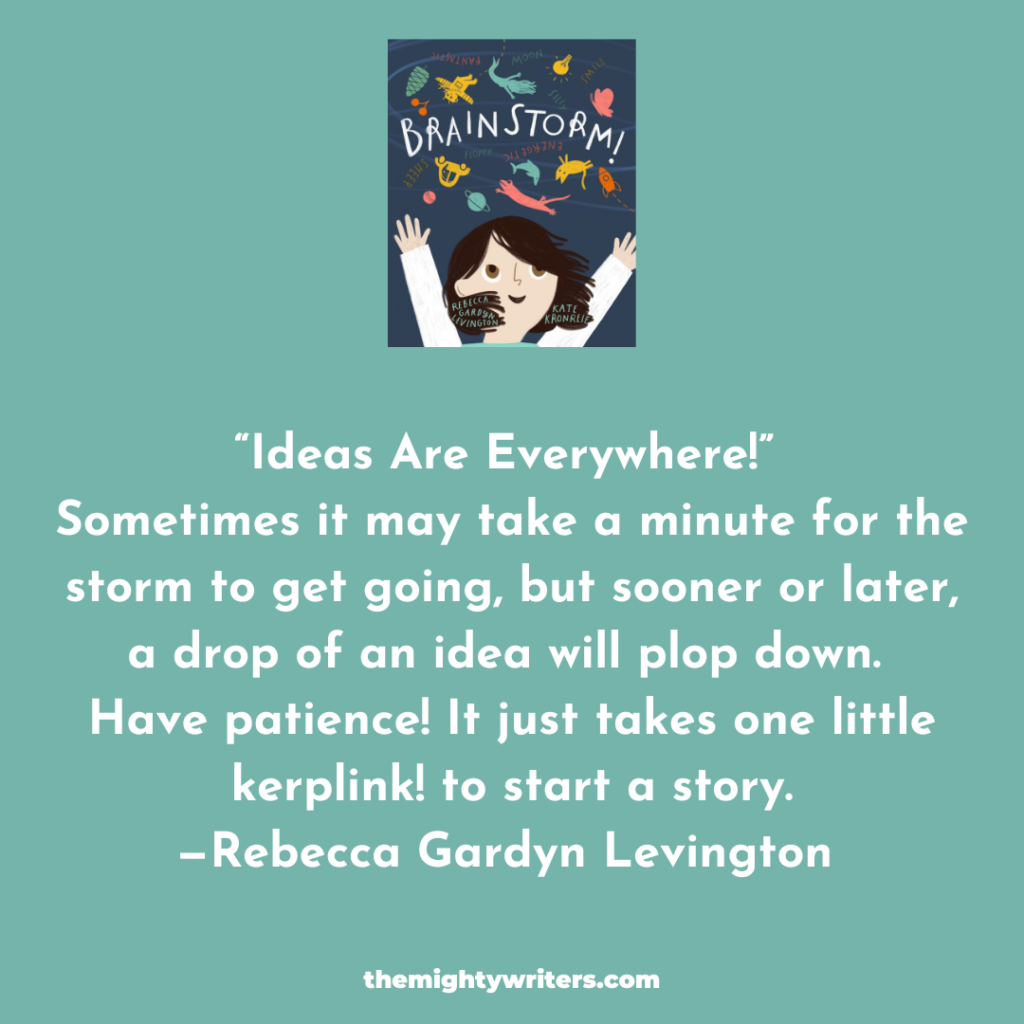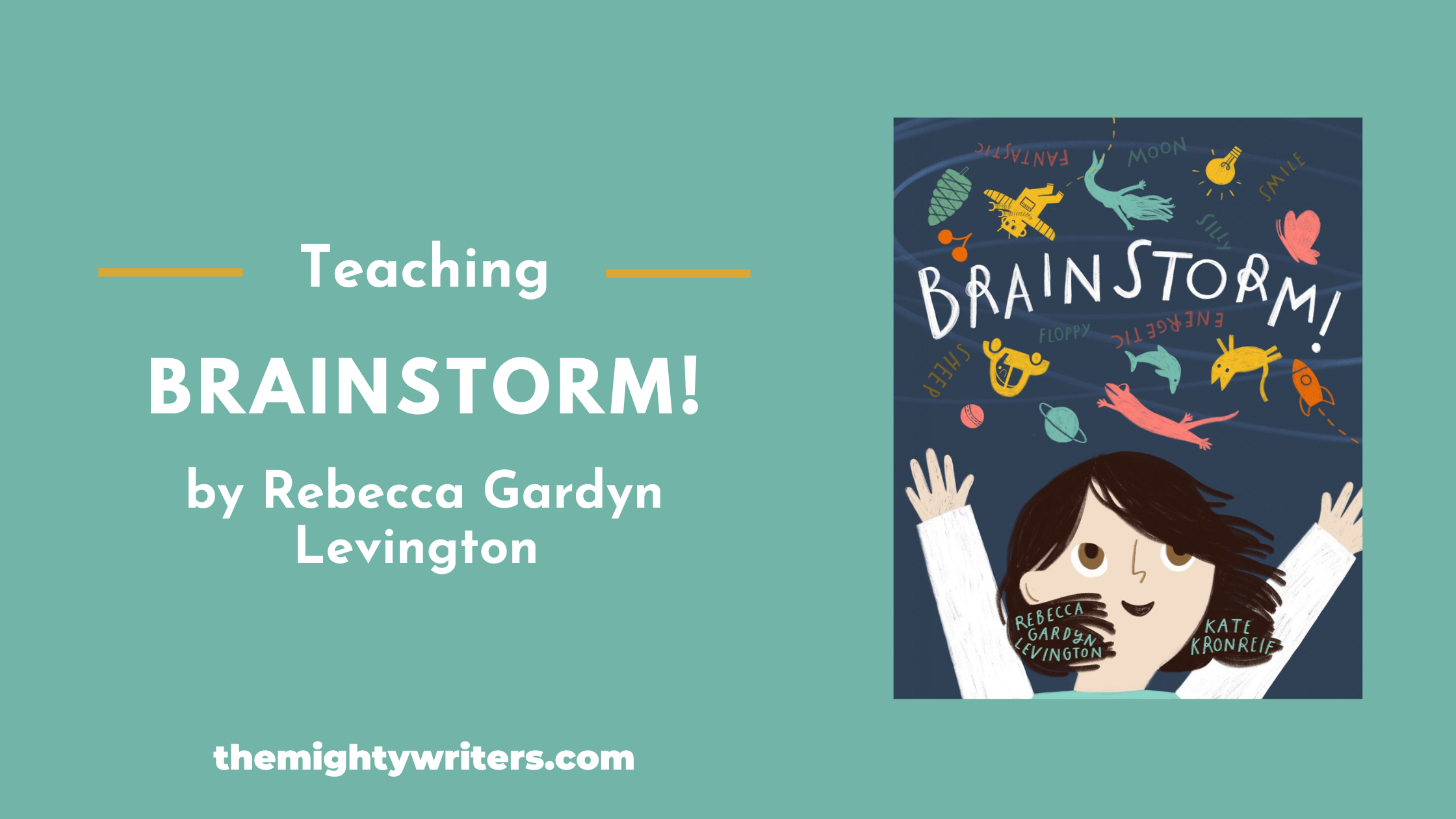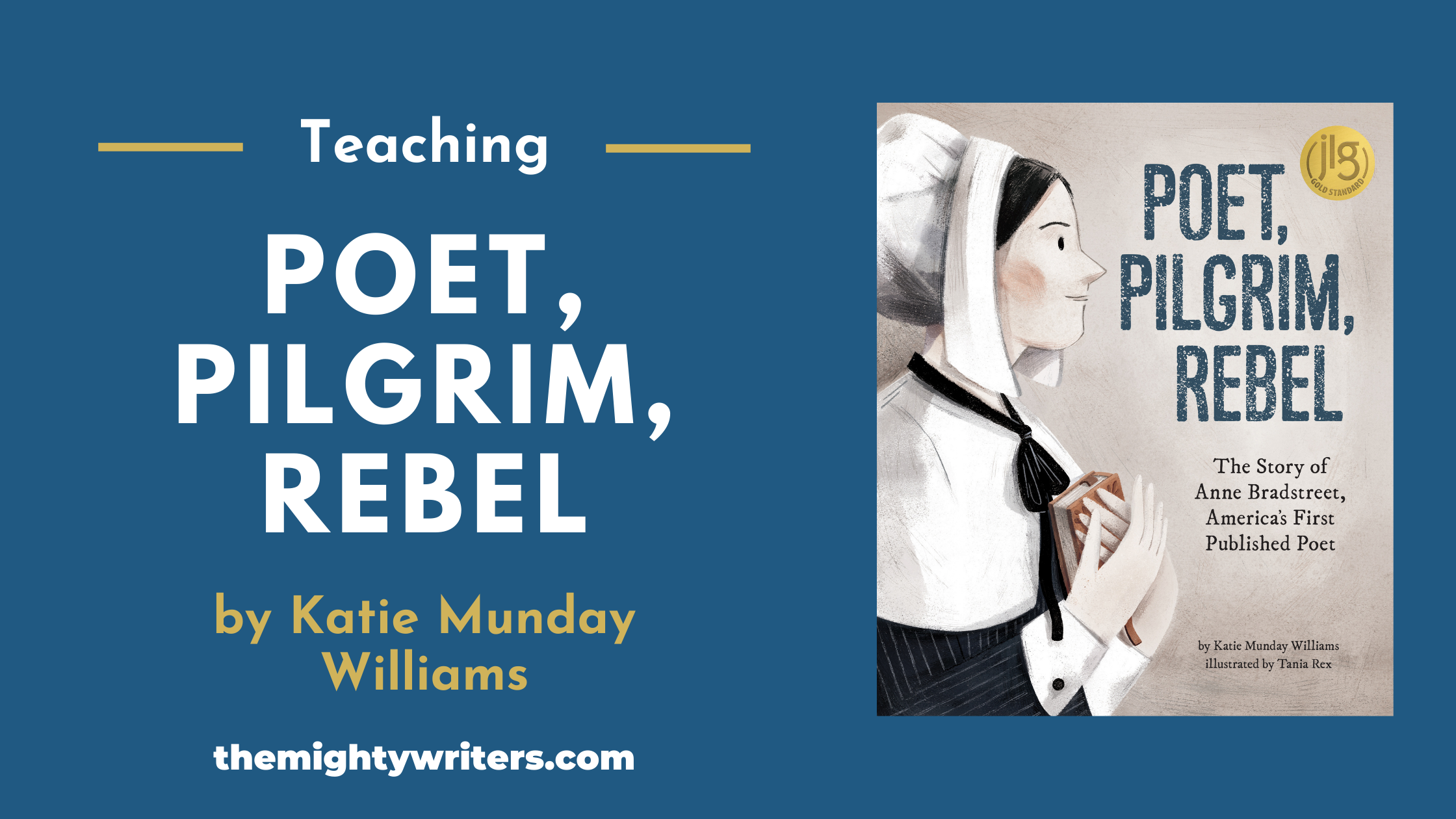A Note to Readers
How many of you teach reluctant writers? I do. And sometimes it’s challenging to encourage them to stick with it long enough to get anything down on paper. I can’t want to read Brainstorm! to them! Brainstorm! is the perfect book to inspire them to let the ideas flow! Think about using it for the National Day On Writing set this year (and every year!) on October 20. Read on! The author Rebecca Gardyn Levington provides OODLES of ways to use this book with your students! -Rochelle
Teaching Brainstorm!
Tell us about your book.
I would love to! Thanks so much for having me!
Brainstorm! is a rhyming poem-picture book that begins with a little girl sitting in a classroom, frustrated because she can’t think of anything to write about. As she stares at the storm brewing outside – kerplink! – a tiny thought falls from the sky! The girl gradually finds herself engulfed in a whirlwind of words, pictures, and ideas swirling all around her, eventually becoming caught up in a happy downpour of her own creativity.
Brainstorm! is targeted to children in grades K-5, who are beginning to learn how to shape and sharpen their idea-generation and storytelling skills. The back matter includes a ton of kid-friendly writing prompts (“Cloudy With A Chance of Ideas!”) as well as a glossary (“A Tornado of Terminology,” which includes both parts of speech as well as storytelling terms) that parents and educators can use to encourage kids to have fun playing with their ideas!
Here’s what Kirkus had to say:
“…The metaphor nicely captures the creative process—from the frustration of waiting for inspiration to the anticipation of something gathering in the distance to the sought-after deluge of ideas […] Entertaining reassurance and lighthearted encouragement for those tough first moments of putting pencil to paper.” – Kirkus Reviews
You can read the full Kirkus review of Brainstorm!, here: https://www.kirkusreviews.com/book-reviews/rebecca-gardyn-levington/brainstorm-levington/
What do you hope your young readers will take away from your book?
Great question! I think the two main themes I hope young readers will take away from Brainstorm! are:
“Ideas Are Everywhere!” Sometimes it may take a minute for the storm to get going, but sooner or later, a drop of an idea will plop down. Have patience! It just takes one little kerplink! to start a story.
“Writing (and especially the brainstorming process) Is Fun!” I wrote Brainstorm!, in part, for my two boys – and other reluctant writers like them — who often complain about how “boring” writing is. It saddens me that sometimes the enjoyment that comes with letting your imagination go wild gets forgotten when kids feel they “have to” write. My hope is that this book – with the fun rhythm and colorful illustrations — will inspire and encourage kids to start playing with words and having fun with their ideas again!

How might a teacher or librarian use your book in the classroom?
I would be thrilled for teachers to use Brainstorm! in their classrooms! In fact, that is why I included a full page of writing prompts! But in addition to using the back matter, teachers can use Brainstorm! in many ways. Here are just a few:
- The book is essentially one long poem, chock full of lyrical devices like alliteration, assonance, and onomatopoeia, so teachers can use the book as an example when discussing poetic devices during April’s National Poetry Month or during any time of year.
- Brainstorm! can be used to discuss the concept of brainstorming as it relates to ANY type of writing – from “small moment” stories, to persuasive essays, to non-fiction research projects, to poetry, etc.
- I purposefully weaved in various parts of speech within Brainstorm! (“Gusts of adjectives blow by / Verb clouds swell and multiply…”) as well as the names for concepts related to story structure (“I’m sopping wet with wacky thoughts / of characters and twisty plots / of images and bits of dreams, / of settings, scenes, and quirky themes!”) all of which are defined in the “Tornado of Terminology” glossary in the back matter. Teachers can use the glossary and the illustrated words that the illustrator has weaved throughout the book in discussions about both parts of speech and narrative structure.
- Teachers can also use Brainstorm! to spark conversations with students about their own experience with the writing process. Some kids may love brainstorming, whereas others may prefer outlining, drafting or revising. Teachers and kids can share strategies that have helped them during each step of the process.
Can you share an exercise or activity that teachers can do with students after they’ve read your book?
Absolutely! In addition to the extensive list of writing prompts in the back matter, Sleeping Bear has created a FREE BRAINSTORM! Teacher’s Guide which includes a TON of amazing discussion questions as well as brainstorming, researching, and critical thinking exercises for teachers to use with students. The publisher created some very fun Activity Sheets to go with the book as well.
Both the Teacher’s Guide and Activity sheets can be downloaded on my website: https://rebeccagardynlevington.com/books/brainstorm/
What book(s) pair well with your book?
The Story of a Story by Deborah Hopkinson, illustrated by Hadley Hooper
I Have An Idea! by Herve Tullet
How To Write a Story by Kate Messner, Illustrated by Mark Siegel
Ideas Are All Around by Philip C. Stead
Only An Octopus by Maggie Tokuda-Hall, Illustrated by Benji Davies
A Squiggly Story by Andrew Larson, illustrated by Mike Lowery
The Word Collector by Peter H. Reynolds
 About the author. Rebecca Gardyn Levington is a children’s book author, poet, and journalist with a particular penchant for penning both playful and poignant picture books and poems – primarily in rhyme. Her debut picture book BRAINSTORM! (Sleeping Bear Press, 2022) was released in August. She has four more rhyming picture books being published in the next two years. Find out more about Rebecca at www.RebeccaGardynLevington.com and follow her on Twitter at @WriterRebeccaGL.
About the author. Rebecca Gardyn Levington is a children’s book author, poet, and journalist with a particular penchant for penning both playful and poignant picture books and poems – primarily in rhyme. Her debut picture book BRAINSTORM! (Sleeping Bear Press, 2022) was released in August. She has four more rhyming picture books being published in the next two years. Find out more about Rebecca at www.RebeccaGardynLevington.com and follow her on Twitter at @WriterRebeccaGL.





